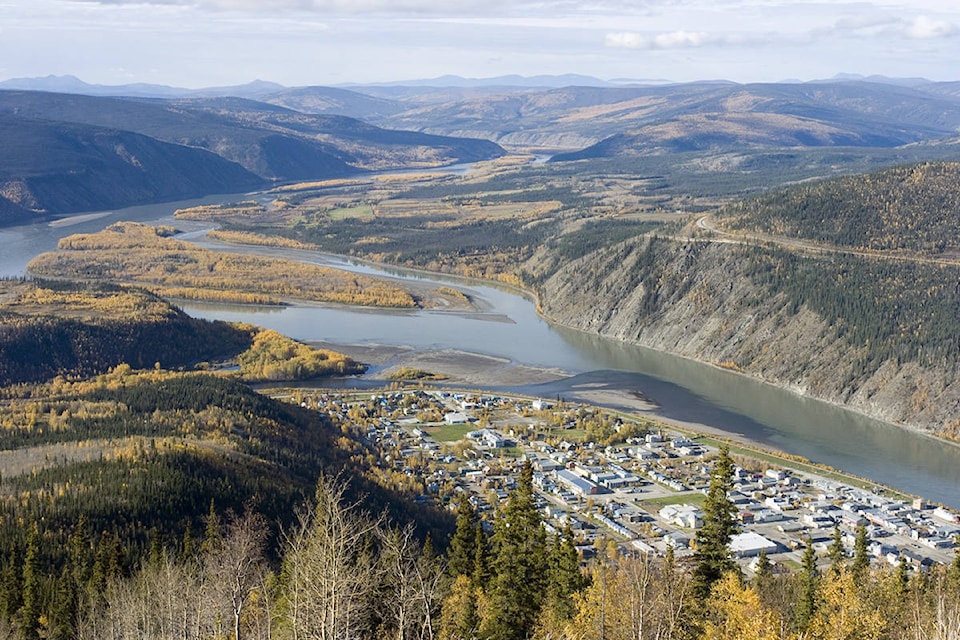Water infrastructure around Dawson City is set for a major overhaul starting this year thanks to millions of dollars from the federal government.
Ottawa is earmarking $15 million for a new pumphouse and water treatment equipment. The money, announced last week, is mostly coming from the federal small communities fund for infrastructure. Ottawa is providing $11.25 million while the territory will fork over up to $3.75 million.
The current water system doesn’t meet the modern federal guidelines, said Louis Gerberding, superintendent of public works for the City of Dawson.
Dawson’s aquifer is drawn from the Yukon River. That makes it less isolated from surface water than other aquifers that are further underground.
“Surface water has a higher probability of bacteriological contamination whereas groundwater does not,” Gerberding said.
Currently Dawson treats its water using chlorine. There’s never been any contamination of the treated drinking water with the old system, but it doesn’t meet modern regulatory requirements, he said.
Instead of just treating with chlorine, the new system will use filtration, UV disinfection and then chlorination.
The plan is to start construction of the new facility in June 2018 and have it complete by spring 2020. The demolition of the existing facility is expected to happen in the summer of 2020.
Along with the new pumphouse, Dawson is getting more than $12 million for five smaller projects happening between this summer and 2020. That money is coming from the federal clean water wastewater fund. Like the small communities fund, Ottawa is covering 75 per cent of the cost while the Yukon government chips in the remaining 25 per cent.
Most of the tenders have already gone out.
Along Front Street, 288 metres of aging water mains and 230 metres of sewer lines are being replaced. The work will begin this year and is expected to be done by Thanksgiving 2019, Gerberding said.
The road, alleyways and boardwalks will be rebuilt. Road signs are also slated to be replaced.
Approximately 270 metres of sewer main pipe will be replaced along Fifth Avenue, from King Street to Princess Street.
The line is being made bigger so that it has the capacity to deal with Dawson’s growing population, Gerberding said. Work is scheduled to start this August and be completed by October 2018.
The York Street lift station is at the end of its life, he said. Work on building a new station should be completed this fall, but demolition of the old facility might not happen until 2019.
The Klondike Valley lift station is also getting an upgrade. Gerberding said changing out some controls and adding new flow metres, should help reduce a smell that sometimes comes out of the station.
The work is scheduled to start in the spring and continue until fall.
The last piece of infrastructure work will be replacing the Craig Street hydraulic tower. That work is not slated to start until 2019.
The hydraulic tower is responsible for transferring wastewater from the Klondike Valley sanitary sewer main.
“A lot of the efforts that we’re doing in 2018 might impact the design that is chosen for that hydraulic tower,” said Dawson City project manager Trina Buhler.
As it stands, the current tower is in such rough shape that no city staff are allowed inside.
There is hydrogen sulphide gas that has built up, potentially corroding some of the concrete, Gerberding said.
The replacement is scheduled to be completed in the fall of 2019.
Companies who get these contracts will be required to come up with an asbestos exposure control plan. Some low levels of naturally-occurring asbestos have been found in the ground around Dawson, said Aisha Montgomery with the Yukon’s Department of Community Services.
It’s believed the asbestos was brought down with rocks during the prehistoric moosehide slide.
Rock from that slide was used in Dawson for fill and other construction projects until around 30 years ago, she said.
Once the projects get started, the government will be doing air quality tests at the specific sites. Depending on what is found, the required level of protection could be reduced, she said.
The cash from the clean water wastewater fund was set to expire in March of 2019. The territory was granted an extension allowing work to continue through the summer of 2019. The new deal lasts until March 2020, Gerberding said.
Contact Ashley Joannou at ashleyj@yukon-news.com
